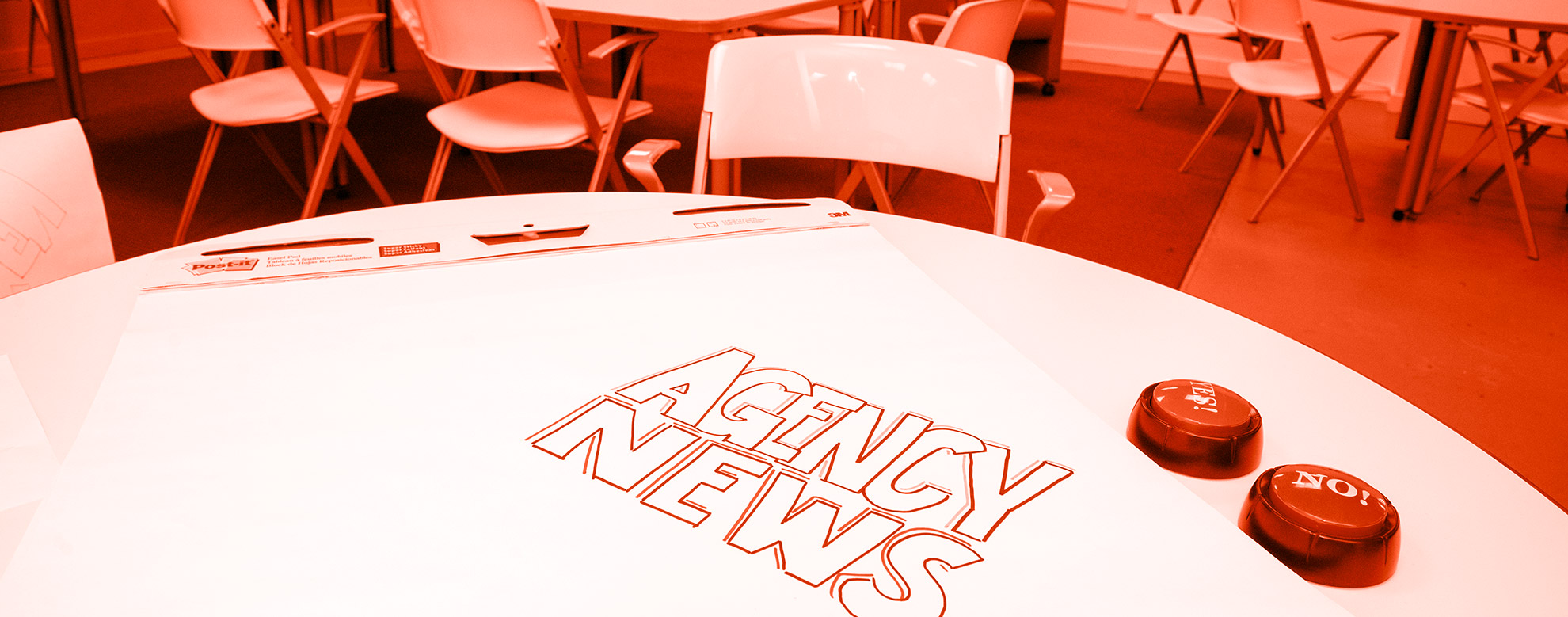Updated June 3rd, 2019
Idea generation is the lifeblood for every organization and one of the most important assets for marketing teams. As you know, some people are perceived as being much better at generating ideas than others—the “light bulbs” just seem to turn on faster. The truth is, everyone can participate in idea generation—no matter how they’re wired.
What is idea generation
Idea generation is “the process of creating, developing, and communicating ideas which are abstract, concrete or visual.” As the first stage in the idea management funnel, idea generation simply focuses on identifying solutions for a problem.
Why idea generation is important
It’s rare for the best ideas to pop into our heads instantaneously – though sometimes it seems like some people have a gift for generating instant solutions. Instead, great ideas take time to develop and mature. Therefore, idea generation is important because the process expands your thinking beyond the obvious or rational.
Success factors for generating innovative business ideas
In order for idea generation to be successful, you must consider several factors:
The problem you’re solving
Before you can reach a solution, you need to first understand the challenge or obstacle ahead of you. That includes researching the market, competitors, trends and so forth. Equipping your team with this knowledge can lead to insights that inspire creative solutions and imagination.
Target audience needs
It’s important to remember that creativity can come from anywhere and anyone. Effective creative is driven by an understanding of the target—what they need or care about and how we can help them. Great creative work adds a layer of imagination and insight to make the messaging, strategy or approach unique and powerful.
Workplace culture
Your company culture should provide an environment in which creative expression and active discussions are encouraged. Great ideation can be difficult if employees do not feel safe expressing their thoughts and/or opinions. Where do you start to build a culture emphasized on creative expression? From the top with transparent and encouraging leadership.
Stakeholders & team members
Prior to the ideation process, determine who the key stakeholders or team members are and whether they should be included in the idea generation exercises. Examples of key members might include department heads, CEOs, project managers, account folks or creatives. From an approval standpoint, having these people in the same room at the start can ensure on-strategy solutions and early alignment.
Guardrails or constraints
While it’s fun to imagine any project has endless possibilities, it’s simply never the case. Before brainstorming ideas, set basic limitations to keep everyone’s ideas from veering too far off track. These constraints might include timing, budget or priority. While you never want to stifle creativity and imagination in the ideation process, these constraints can help avoid drifting off into “dream land.”
The principles of idea generation
In our agency, everyone on the team plays an important role in generating ideas for our clients. It doesn’t always happen naturally, however. We must set aside time to develop these ideas. To better equip and train our team, I am reviewing several resources. One of them is a short book called A Technique for Producing Ideas by James Webb Young. This quick read is not hot off the press, rather an older publication first published in 1940 and recently republished by Walking Lion Press. The author writes that there are two important underlying principles to the production of ideas.
Principle one: a new idea is nothing more than a new combination of old elements
Principle two: capacity to bring old elements into new combinations depends largely on the ability to see relationships
Consciously or unconsciously, every idea we produce follows a certain technique that includes these principles. Thanks to these principles, we can cultivate a conscious idea-generating technique. According to Young, this technique follows a five-step process from which all ideas flow. It’s important to follow each step in sequence.
5 Steps of the idea generation process
 Step 1 – Gather raw materials
Step 1 – Gather raw materials
In the advertising world, it is the agency’s job to know the client, its products and, most importantly, its customers. Yet most agency people stop too soon in the process of gathering information. If enough research exists, differences between products and consumers appear, leading to relationship individualities that may lead to an idea. In advertising, an idea results from a new combination of specific knowledge about products and people with a general knowledge about life and events. A practical step is to write information down and save it in a systematic way on your computer. Classify and organize information as you gather it. This helps prepare your mind for the idea-producing process.
 Step 2 – Blend your information together
Step 2 – Blend your information together
The second step, after thorough raw material gathering, is to blend the information together—bringing facts together to see how they fit. Bits of ideas may begin to appear; this can be mentally exhausting but press on and think of it as putting a puzzle together.
 Step 3 – Drop and forget it
Step 3 – Drop and forget it
Drop the idea completely and turn it over to your unconscious mind: In other words, let it develop while you sleep. Also, do things that you enjoy that stimulate your mind and emotions. Listen to music; go to the movie or theater; read poetry; or get outside your normal routine.
 Step 4 – Have your eureka moment
Step 4 – Have your eureka moment
If you’ve really done your work during the first three steps, then the fourth happens naturally. Perhaps you’ve experienced this: a “Eureka” or “I’ve got it” moment. You wake up with a great idea or you are taking a shower or driving to work and the idea appears with clarity. Write it down or commit it to memory.
 Step 5 - Share your idea
Step 5 - Share your idea
This is when reality hits. Your bright, shiny idea may lose some of its luster once others are made aware of it. However, the refining and tuning process that happens when you share your ideas with the team can offer enlightening perspective—and generate something better. It’s important not to hold your idea too tightly: allow it to go through a critical-thinking process. If it’s a good idea, you will see that it has self-expanding qualities, and with this, possibilities you did not think of may come to light.
This five-step process, as simple as it seems, will allow you to continue down the path of producing relevant and dramatic ideas for your business. However, Young’s method of idea generation is not the only approach.
Other popular methods and techniques for generating ideas
Brainstorming
Probably the most well know idea generation exercises are brainstorming and mind mapping. Brainstorming is a process which involves coming up with as many solutions for a specific problem as possible. This activity can either be done individually or in a group or sometimes a combination of both.
At LoSasso, we tend to brainstorm individually and then meet as a group to review, build upon and prioritize our ideas prior to sharing with the client. This not only helps us solve our clients’ problems but ensures key members are involved and aligned. More often than not, we find ourselves combining multiple ideas into one killer idea.
Mind Mapping
Mind mapping is a visual framework representing tasks, concepts or items linked to a central concept. The main benefit of this technique is to help organize and categorize ideas faster so you can more quickly identify relationships between concepts. In fact, mind mapping can be useful for inspiring or uncovering connections you wouldn’t normally think of or see. For example, if you’re looking for ways to increase product sales, a mind map may illuminate new ways to think about how you message the product offerings or approach marketing overall.
A mind map must have three characteristics I order for it to be successful:
- Your central tropic should be at the center of your map
- Main themes of the central topic should branch out from the center
- Second level topics form the structure of your mind map
We encourage using various colors to denote relationships, doodling to highlight areas and having fun when mind mapping. Let your mind and your team wander free to create those new, unexpected relationships. When the mind mapping process is complete, then you can go back and refine ideas that come out of it.
SCAMPER technique
Another popular idea generation and creative thinking approach is the SCAMPER technique which focuses on understanding the problem. Developed by Bob Eberie, the acronym stands for (S) substitute, (C) combine, (A) adapt, (M) modify, (P) put to another use, (E) eliminate and (R) reverse. This technique works by using each of the seven prompts to ask questions about existing products with the goal of improving upon them or innovating new solutions.
Opposite thinking
Also known as reverse thinking, instead of going with the rational route to solve the problem, you consider the exact opposite of the idea. For example, if you’re generating ideas for how to increase email subscribers, you’d instead ask yourself: How do I stop getting new email subscribers? This approach allows you to expand your thought process and pinpoint certain areas or solutions that wouldn’t normally cross your mind.
Now that you’ve successfully come up with brilliant ideas, you or your team needs a place to organize and store them.
Helpful tools & resources for idea generation
Whether you’ve already had your “Eureka” moment or you’re looking to inspire one, the following tools and resources can help simplify or strengthen your ideation process.
Brainstorming & mind mapping tools
Earlier we discussed how brainstorming and mind mapping are the most common idea generating approaches. Because of that, it is no wonder there are a variety of tools you can take advantage of online to generate or house ideas. Some of our favorites include:
Idea generation and management software
It’s not unusual for someone to take notes or write ideas on a white board during ideation meetings. However, you must then task someone with gathering all the notes and sharing with the broader team. While there is nothing wrong with this approach, a central location to store all the ideas and that everyone can access is preferred. That’s where idea generation software comes into play.
Before entering your credit card, you should consider a few characteristics when choosing the right management software for your business—usability, versatility and accessibility. Based on these criteria, the below tools are our top picks:
- Viima
- BrightIdea
- Codigital
- Mind Vector
- Spigit
Books related to idea generation
The best way to inspire and encourage the ideation process is to continue learning and developing your own approach. We recommend taking a look at a few of these top reads:
- The Accidental Creative
- Creativity
- Where Good Ideas Come From
- Zig Zag
- Powers of Two
- Manage Your Day-to-day
- The Book of Doing
- Creative Confidence
Whether you’re launching a new product or trying to generate leads, finding the right idea generation technique for you and your team is guaranteed to deliver a light bulb moment.

![How to generate ideas [steps + techniques + resources]](https://www.losasso.com/wp-content/uploads/2019/05/losa-6196-01_Blog-header_April_IdeaGenerationRefresh.jpg)
